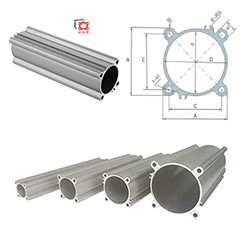Small Capesize vessels are being squeezed out of the market by large ships
The bank's research indicates that in the critical iron ore trade sector, the bulk carrier segment is losing market share, mainly covering bulk carriers ranging from 8,350 to 150,000. Its market share is gradually flowing to the new generation of large Capesize ships and ore carriers.
Under the situation that the demand for dry bulk cargoes continues to grow, it is undeniable that small Capesize vessels still have a chance to make plans, but the bank’s research suggests that they are not in the most favorable competition compared to large vessels. status.
“The fundamentals of demand in the dry bulk market are still strong,†the study said. “The demand for small Capesize vessels will be driven by coal shipments, which are mainly destined for Asia, with destinations mostly in India and China. The expansion of the Panama Canal will also provide additional advantages for these vessels. But in the long run, The market share of small Capesize vessels is expected to gradually flow to large bulk carriers. In addition, the oversupply situation of the fleet is very serious, and the excess capacity is close to 20 million DWT, equivalent to about 35% of the existing fleet. Capacity is expected to gradually decrease in the next few years, but ship utilization will not soon reach the important technical barrier of 90%," the study predicts.
The savvy of the small Capesize ship is the general trend of the shipping industry. In 2000, small Capesize ships accounted for 30% of the shipments of all Capesize vessels, but currently only 15%, and this level is likely to remain until 2015. And according to the German Transport Credit Bank, in the long run, this ratio will even fall to around 10%.
But this sector also has its positive factors. A total of 573 small Capesize fleets are relatively young, with an average age of six years, and currently only 71 ships are scheduled.
In addition, in the business of thermal coal and thermal coal, the demand for small Capesize vessels is also very strong. These coals are mainly shipped from Colombia, Indonesia and Australia to India, China and Europe. This situation is expected to last for some time until the import and export terminals can upgrade facilities to load and unload larger ships.
Colombia's coal exports to Asia and Europe continue to grow. This long-haul shipping demand is expected to last for several years, and the small Capesize ship will be the "biggest beneficiary", the German Transport Credit Bank predicts.
At the same time, the widening of the Panama Canal means that small Capesize vessels can further penetrate into the grain trade sector, exporting soybeans and soybean meal from the United States to Latin America and Asia, and picking up cargo from small Kamsa and Panamax vessels. .
In the food transportation market, the market share of small Capesize vessels has increased significantly. In 2000, it was only 1%, and now it has a 13% share.
DNT Pneumatic Aluminum Tube for Compact Pneumatic Cylinder Barrel
Pneumatic Cylinder profile aluminum mickey mouse cylinder tube
1,Usage: widely used in construction, furniture and industry area.
2,Diameter: Max we do is 400mm/ Min we do is 6.3mm.
3,Surface treatment: Anodized, powder coated,fluorocarbon coating,electrophoresis etc.

DNT Pneumatic Cylinder Barrel,DNT Pneumatic Cylinder Tube,DNT Pneumatic Cylinder Tubing,DNT Pneumatic Cylinder Pipe
Foshan Weiyingjia Technology Co., Ltd , https://www.wyspneumatic.com